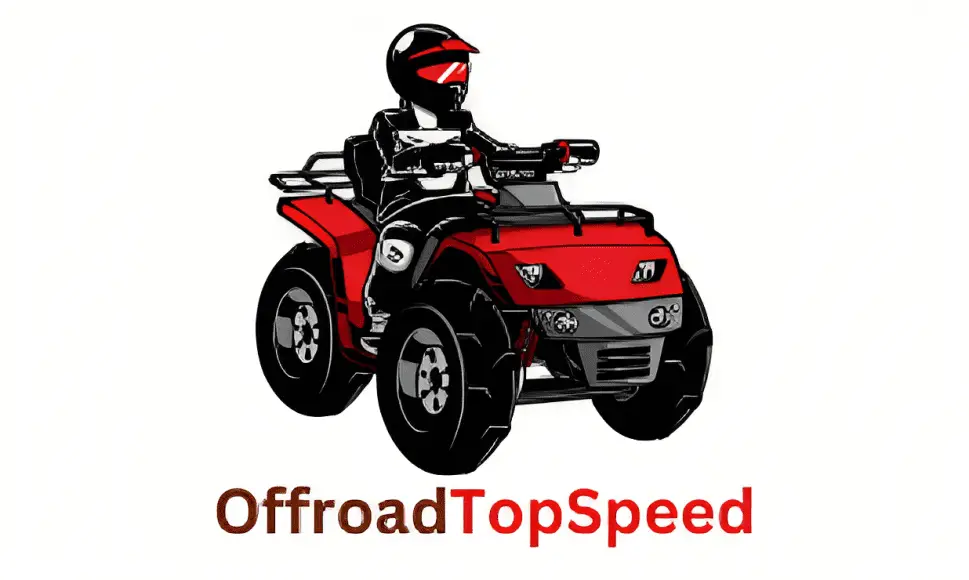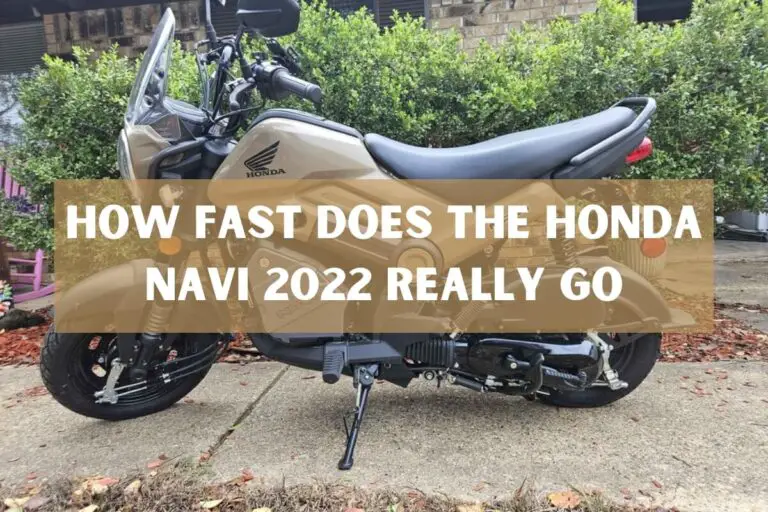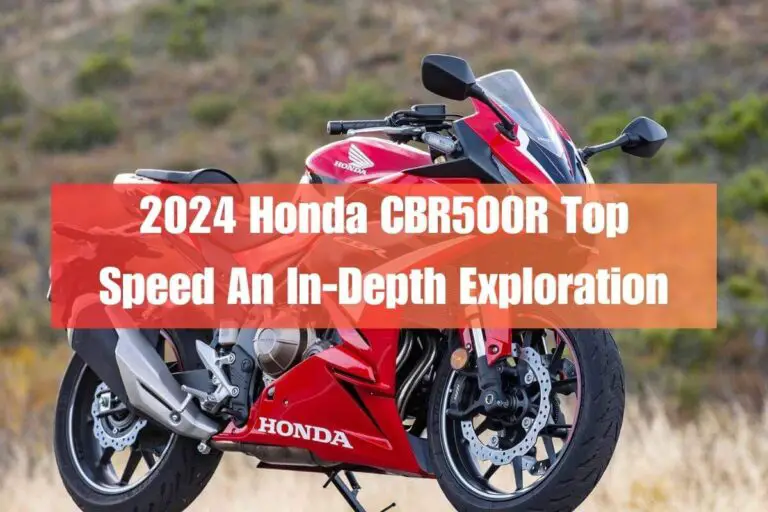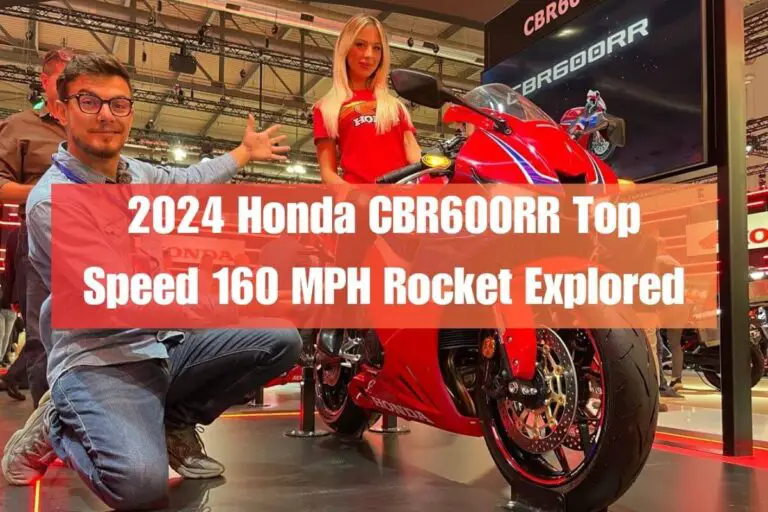Honda 400EX Top Speed: Unleashing Its Thrilling Power
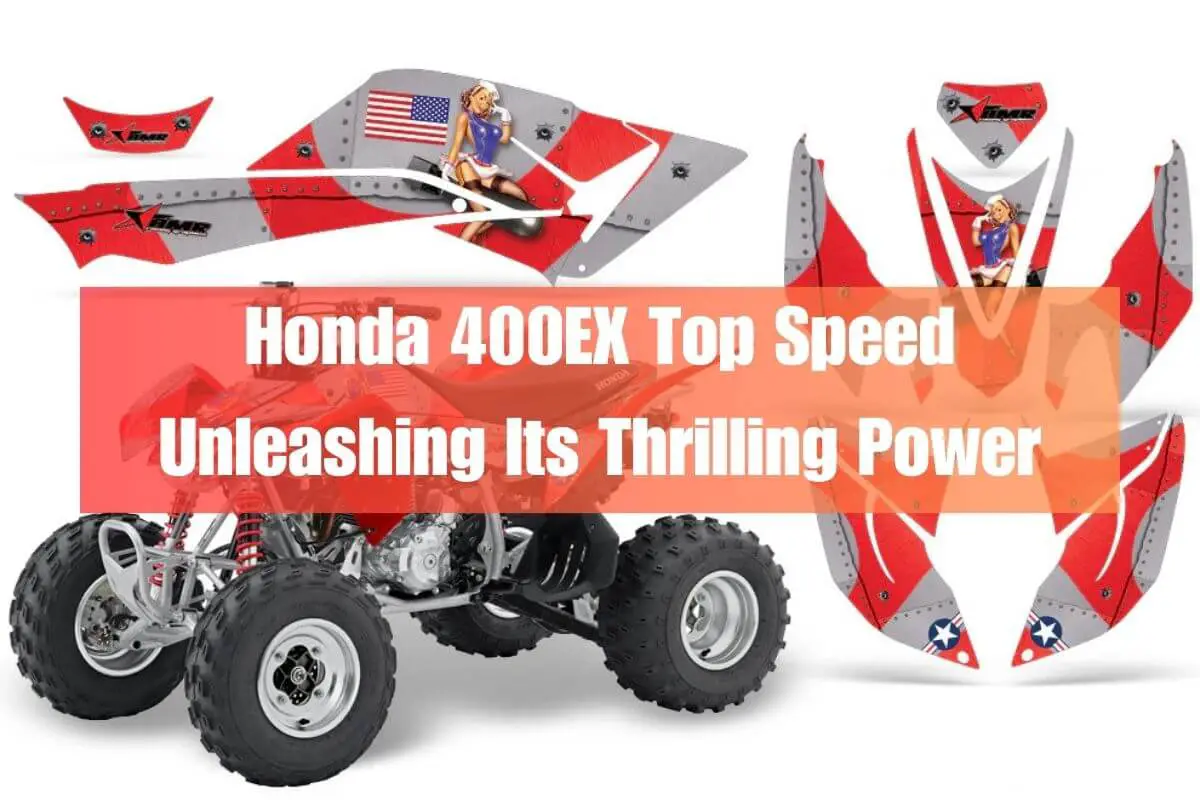
For thrill-seekers and off-road enthusiasts, the Honda 400EX all-terrain vehicle (ATV) has been a beloved choice for years, thanks to its remarkable speed capabilities. Boasting a top speed of 72 MPH, this powerful quad is designed to deliver an adrenaline-filled ride on even the most challenging terrains.
Highlights of the Honda 400EX
Before diving into its blistering top speed, let’s take a moment to appreciate the key highlights that make the Honda 400EX a standout performer in the ATV world.
Introduced in 1999, this model quickly gained a cult following among riders who sought a perfect blend of agility, power, and durability. Its robust steel frame and rigid cast aluminum swing arms provide a solid foundation, while the triple disc brakes ensure reliable stopping power.
The 400EX’s aggressive body style complements its impressive drivetrain, which includes a high-performance 397cc dry-sump, air-cooled, four-stroke single-cylinder engine. Honda’s engineers paid close attention to camshaft timing, optimizing torque and usable horsepower delivery.
The Thrilling Top Speed of the Honda 400EX
At the heart of the Honda 400EX’s speed prowess lies its powerful 28-horsepower engine. This air-cooled, four-stroke powerplant propels the ATV to an exhilarating top speed of 72 MPH, making it one of the fastest quads in its class.
To put this speed into perspective, let’s compare it to some of the 400EX’s closest rivals:
- Suzuki LT-Z400: Often referred to as the “400EX killer,” this sport quad from Suzuki also features a 398cc engine but may slightly lag behind the Honda in top speed performance.
- Honda TRX 450R: Designed primarily for the racetrack, the 450R boasts impressive suspension capabilities but may not match the 400EX’s tight woods handling or top speed potential.
Factors Influencing Top Speed
Several key factors contribute to the Honda 400EX’s remarkable top speed capabilities:
- Engine Specifications: The 397cc dry-sump, air-cooled, four-stroke single-cylinder engine with a radial four-valve combustion chamber (RFVC) is optimized for maximum efficiency and power delivery.
- Transmission: The five-speed transmission with reverse gear allows riders to harness the engine’s power effectively across various terrain conditions.
- Weight and Aerodynamics: With a dry weight of 375 lbs, the 400EX strikes a balance between agility and stability, while its aggressive body style enhances aerodynamic performance.
- Terrain and Riding Conditions: The top speed of 72 MPH is achievable on smooth, paved surfaces. Off-road conditions may limit the maximum attainable speed due to factors like loose terrain, obstacles, and inclines.
Owner Experiences and Reviews
Owners of the Honda 400EX have shared a wealth of experiences and insights, both positive and negative, regarding its top speed capabilities:
“The 400EX is an absolute beast! I’ve taken mine up to 70 MPH on wide-open trails, and the acceleration is mind-blowing.” – Jake, Arizona
“While the top speed is impressive, I find that the 400EX struggles to maintain it for extended periods, especially in hot weather conditions.” – Sarah, Texas
Specifications Table
To better understand the Honda 400EX’s capabilities, let’s take a look at its key specifications:
| Specification | Value |
|---|---|
| Engine | 397cc RFVC, dry-sump, 1-cylinder, 4-stroke |
| Bore x Stroke | 85 x 70 mm |
| Carburetor | 38 mm piston-valve with accelerator pump |
| Cooling | Air-cooled |
| Transmission | 5-speed with reverse |
| Front Suspension | Independent double-wishbone with Showa shocks, 8.2 inches of travel |
| Rear Suspension | Pro-Link fully-adjustable single Showa shock, 9.1 inches of travel |
| Front Brakes | Dual hydraulic 174 mm discs |
| Rear Brake | Single 220 mm disc |
| Front Tire | 22 x 7-10 knobby radial |
| Rear Tire | 20 x 10-9 knobby radial |
| Length | 72.2 inches |
| Width | 45.3 inches |
| Height | 43.7 inches |
| Wheelbase | 48.4 inches |
| Seat Height | 31.9 inches |
| Ground Clearance | 4.3 inches |
| Dry Weight | 375 lbs |
| Fuel Capacity | 2.6 gallons (including 0.4-gallon reserve) |
| Top Speed | 72 MPH |
Pushing the Limits: Modifications for Increased Speed
While the Honda 400EX is a speed demon straight from the factory, many owners have explored aftermarket modifications to further enhance its performance. Popular upgrades include:
- Piston and Camshaft: Replacing the stock components with high-performance parts from reputable brands like Hotcams can unlock additional power.
- Breathing Enhancements: An aftermarket exhaust system and high-flow air filter can improve the engine’s breathing capabilities, resulting in more horsepower.
- Airbox Modifications: Drilling 1-inch holes in the stock airbox lid or installing an aftermarket lid can improve airflow, but caution should be exercised during deep water crossings to prevent engine damage.
- Carburetor Upgrades: While costly, a new performance carburetor can significantly boost the 400EX’s speed potential.
- Jetting Adjustments: Increased airflow necessitates jetting changes to maintain the proper air-fuel ratio and prevent lean running conditions.
It’s important to note that while modifications can unleash extra speed, they may also impact the ATV’s reliability, warranty coverage, and overall drivability. Consulting with experienced professionals and following manufacturer guidelines is highly recommended.
Pros and Cons of the Honda 400EX
Like any vehicle, the Honda 400EX has its strengths and weaknesses. Here’s a quick rundown of its pros and cons:
Pros
- Impressive top speed of 72 MPH
- Reliable and durable construction
- Excellent handling and agility
- Beginner-friendly clutch and controls
- Versatile performance on tracks and trails
Cons
- Limited reverse capability
- Fuel efficiency may suffer at higher speeds
- Potential for overheating under sustained high-speed operation
- Maintenance costs for high-performance components
- Weight may be a disadvantage in certain off-road conditions
Top Alternatives to the Honda 400EX
While the Honda 400EX is a standout performer in its class, it’s always wise to explore alternative options. Here are some top competitors to consider:
- Suzuki LT-Z400: With its 398cc engine and aggressive bodywork, the LT-Z400 is a formidable rival in terms of speed and performance.
- Honda TRX 450R: Designed for the racetrack, the 450R offers exceptional suspension capabilities but may fall short in tight woods handling and top speed compared to the 400EX.
- Yamaha Raptor 700R: Powered by a potent 686cc engine, the Raptor 700R offers blistering acceleration and top speed, albeit at a higher price point.
- Polaris Scrambler XP 1000: For those seeking pure adrenaline, the Scrambler XP 1000 delivers a whopping 89 horsepower and a top speed well over 80 MPH, but it comes with a premium price tag.
Pricing, Availability, and Target Audience
The Honda 400EX was produced from 1999 to 2009, which means prospective buyers will need to explore the used market for this iconic ATV. Prices can vary significantly depending on the model year, condition, and any modifications or upgrades.
Generally, you can expect to find well-maintained used Honda 400EX models priced between $2,500 and $5,000. However, rare or heavily modified
However, rare or heavily modified examples may command higher prices, potentially reaching $6,000 or more for exceptional specimens.
As for availability, the Honda 400EX remains a highly sought-after model in the pre-owned ATV market. While not impossible to find, patience and persistence may be required to locate a unit that meets your specific requirements and budget.
Regarding the target audience, the Honda 400EX caters to a wide range of riders, from seasoned off-road enthusiasts to weekend trail explorers. Its impressive speed capabilities make it an attractive choice for those seeking an adrenaline-filled riding experience, while its reliability and handling characteristics appeal to riders who value versatility and dependability.
However, it’s important to note that the 400EX’s performance may be too demanding for complete novices or casual riders seeking a more leisurely ATV experience. Proper safety gear, training, and respect for the machine’s capabilities are essential for safe and enjoyable operation.
Common Issues and Fixes
Despite its reputation for reliability, the Honda 400EX is not immune to potential issues, especially as the units age or undergo modifications. Some common problems reported by owners include:
- Carburetor Issues: Over time, carburetors can become clogged or require adjustment, leading to poor performance or starting difficulties. Regular maintenance, cleaning, and proper jetting can mitigate these issues.
- Electrical Gremlins: Wiring harnesses, connectors, and electrical components can degrade due to exposure to the elements or vibrations. Thoroughly inspecting and replacing faulty components as needed is recommended.
- Suspension Wear: The 400EX’s suspension components, including shocks and bushings, can wear out over time, especially with aggressive riding styles. Periodic inspections and replacements may be necessary to maintain optimal handling and comfort.
- Clutch Slippage: Excessive wear or improper adjustment can cause clutch slippage, resulting in power loss and potential damage. Routine maintenance and timely replacements can help avoid this issue.
- Overheating: While the air-cooled engine is generally reliable, sustained high-speed operation or inadequate maintenance can lead to overheating problems. Ensuring proper cooling system function and monitoring operating temperatures is crucial.
Addressing these common issues promptly and adhering to recommended maintenance schedules can help extend the lifespan and performance of your Honda 400EX.
Frequently Asked Questions (FAQs)
To address some of the most common queries about the Honda 400EX’s top speed capabilities, we’ve compiled a list of frequently asked questions:
Can the Honda 400EX really reach 72 MPH?
Yes, the 400EX is capable of achieving a top speed of 72 MPH when running in optimal conditions on smooth, paved surfaces. However, factors like terrain, rider weight, and modifications can affect the actual top speed attainable.
Is it safe to operate the 400EX at its top speed?
While the 400EX is designed for high-speed performance, operating at or near its top speed should only be attempted by experienced riders in controlled environments. Proper safety gear, training, and respect for the machine’s capabilities are essential.
What modifications are recommended for increasing the 400EX’s top speed?
Popular modifications include aftermarket exhaust systems, high-flow air filters, performance camshafts and pistons, and carburetor upgrades. However, it’s crucial to consult with professionals and follow manufacturer guidelines to ensure reliability and safety.
How does the 400EX’s top speed compare to other ATVs in its class?
The 400EX’s top speed of 72 MPH places it among the fastest in its class, slightly edging out competitors like the Suzuki LT-Z400. However, more modern and larger-displacement ATVs may surpass its top speed capabilities.
Can the 400EX maintain its top speed for extended periods?
While capable of reaching 72 MPH, the 400EX may struggle to sustain that speed for prolonged durations, especially in hot weather conditions or challenging terrain. Frequent cooling periods may be necessary to prevent overheating.
Final Thoughts
The Honda 400EX is a true icon in the world of high-performance ATVs, and its blistering top speed of 72 MPH is a testament to Honda’s engineering prowess. From its potent air-cooled engine to its agile handling and sturdy construction, the 400EX delivers an exhilarating ride that few other quads can match.
While its impressive speed capabilities are a major draw, the 400EX’s versatility and reliability have also contributed to its enduring popularity among off-road enthusiasts. Whether tackling tight wooded trails or carving through wide-open expanses, this quad is equally at home, making it a true all-rounder in the world of ATVs.
Of course, with great power comes great responsibility, and riders must approach the 400EX’s top speed with caution, proper training, and the necessary safety gear. Modifications can further enhance its performance, but it’s crucial to consult with experts and follow manufacturer guidelines to ensure reliability and longevity.
For those seeking a thrilling ride that combines speed, agility, and dependability, the Honda 400EX remains a top contender, even in today’s market. Its legacy is secure, and its top speed capabilities will continue to inspire and captivate off-road enthusiasts for years to come.
